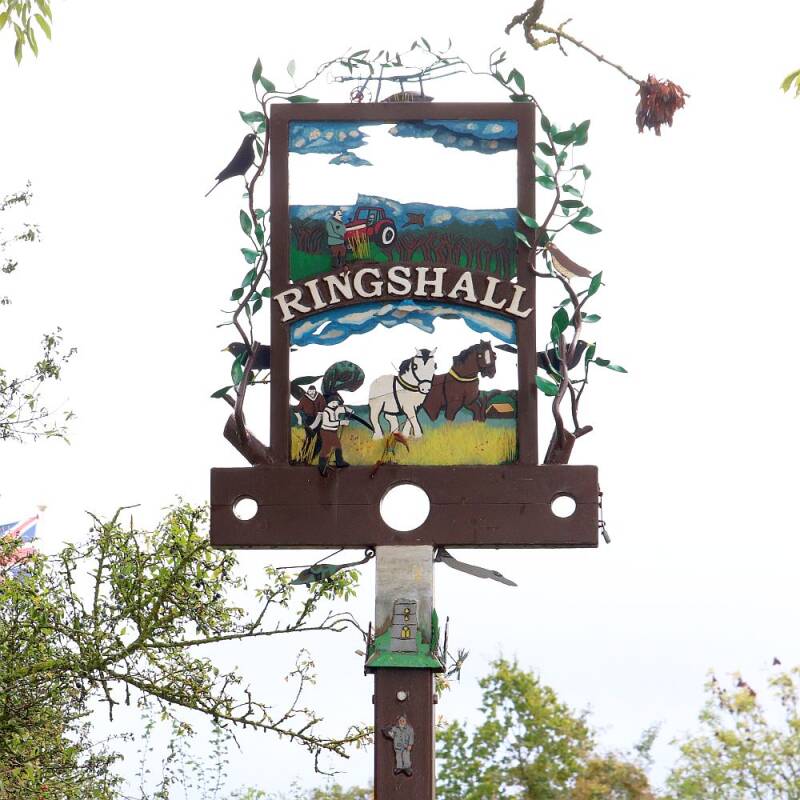Ringshall
The Sign
The sign was erected in 2000 to celebrate the Millennium and located at Ringshall Stocks and made by Michael Poll. Looking closely at the sign shows a multitude of images representing the village. The main panel of the sign is double sided and split into two halves with the top showing a modern farming scene with a tractor in the fields and the bottom showing the traditional way of farming with two heavy horses and farm workers bringing in the crop. A hand plough has also been included on top of the sign. The main frame sits on top of a set of stocks which represents the location of the sign. Around the edge of the main panel are branches of a tree with what looks like blackbirds and a song thrush chirping away. A gamekeeper and his dog can also be found on one side of the top part of the main panel. Below the stocks and on the post can be found several other interesting figures, including: the church with a swallow above, a couple of farm workers bring in the straw or reeds, a McDonald Douglas Phantom airplane, an Apache helicopter, a serviceman and a policeman. I am sure if you look close there will be other delights to find.
The Name and Population
The population was 670 at the 2011 census. The name is Uncertain. The first element could be personal name Hring, or refer to a 'circular feature' such as a (now lost) stone circle. The second is probably 'nook', but could be 'shelter', from Old English and Anglian. It was called Ringesfelda, Ringesfella in the Domesday Book and Ringeshale in 1198.
Other Points of Interest
The Norman church is dedicated to St Catherine and is mentioned in the Domesday Book.
Of Anglo-Saxon origin, Ringshall Grange appears in the 1086 Domesday Book, which is the Grade II Listed former rectory to the church of St Catherine. During 1942 to 1945, the house was used as the East Anglian headquarters of the American Air Force during the Second World War.
Located on the southern edge of the village lies Wattisham Airfield. It is a former RAF base which had opened in 1939 as a medium bomber station. Between 1942 and 1945 the airfield was used by the Americans as the East Anglian Air Force station during WWII.

